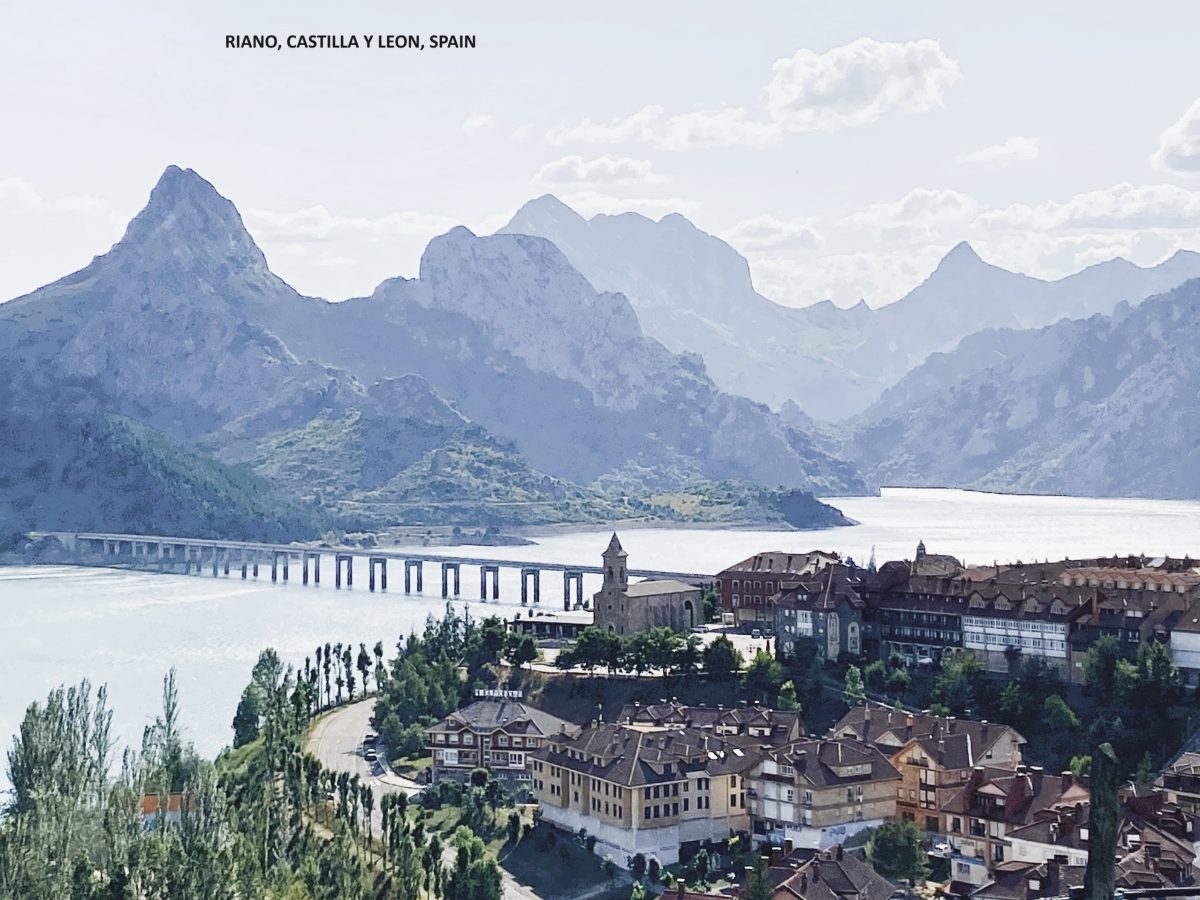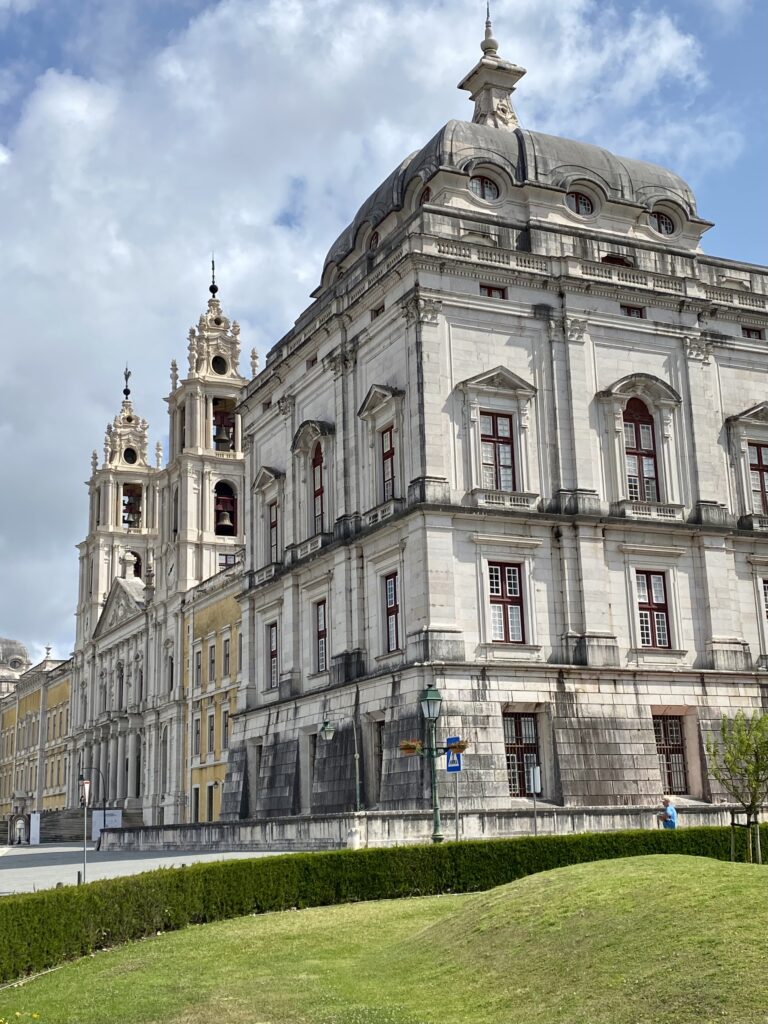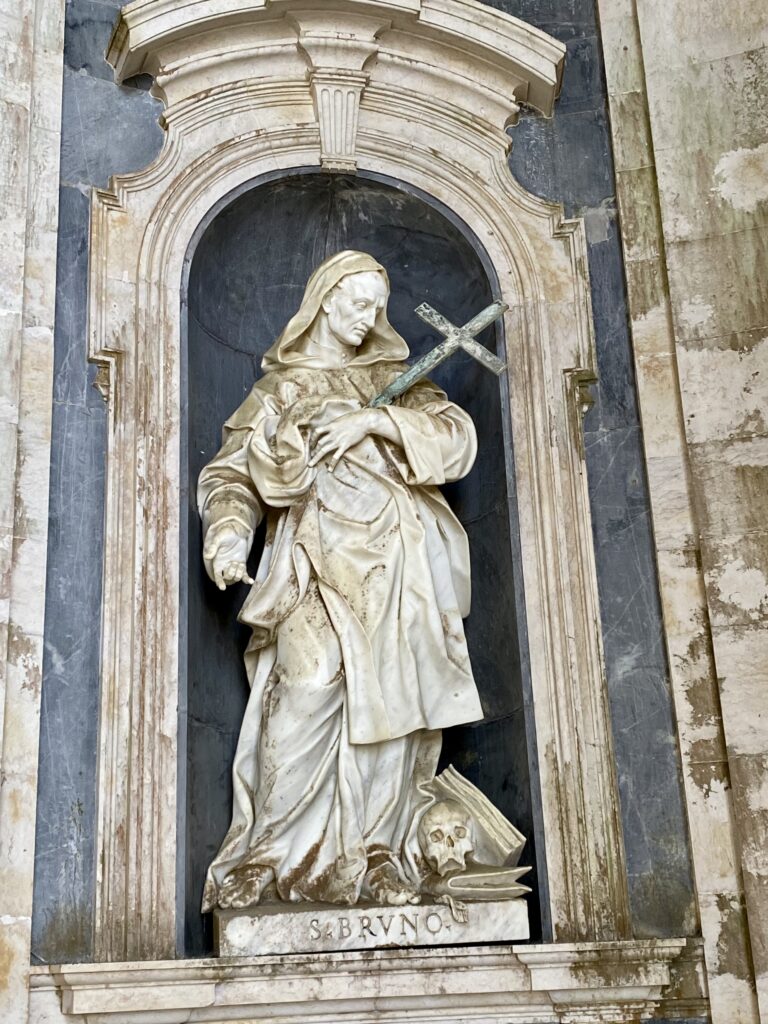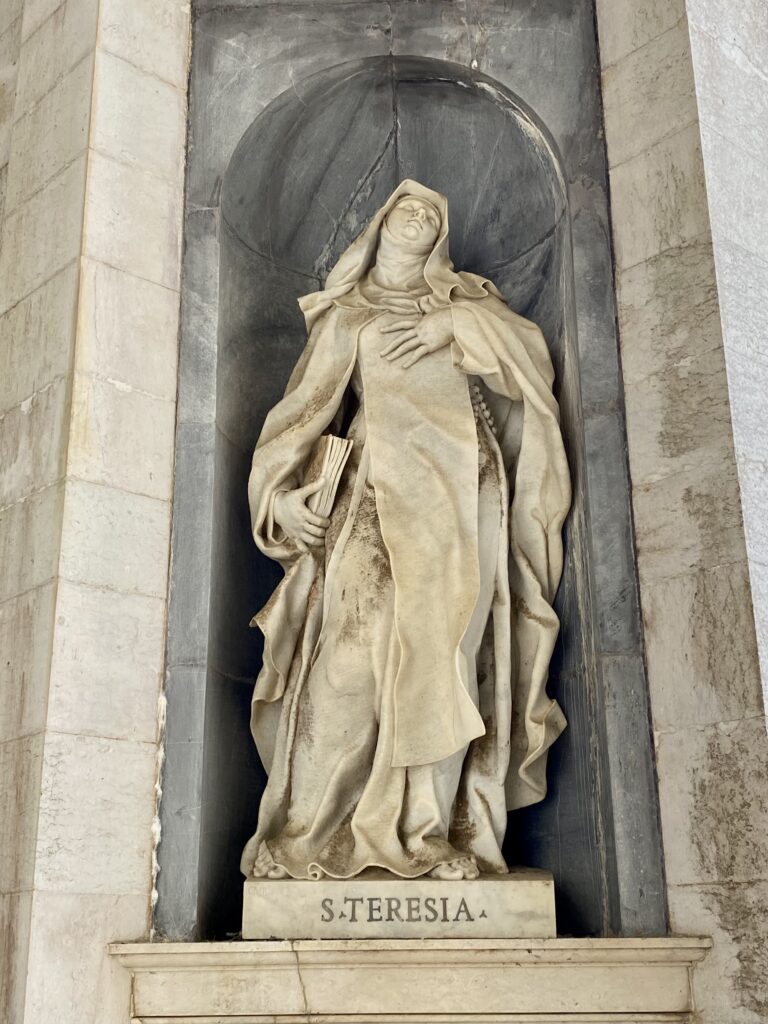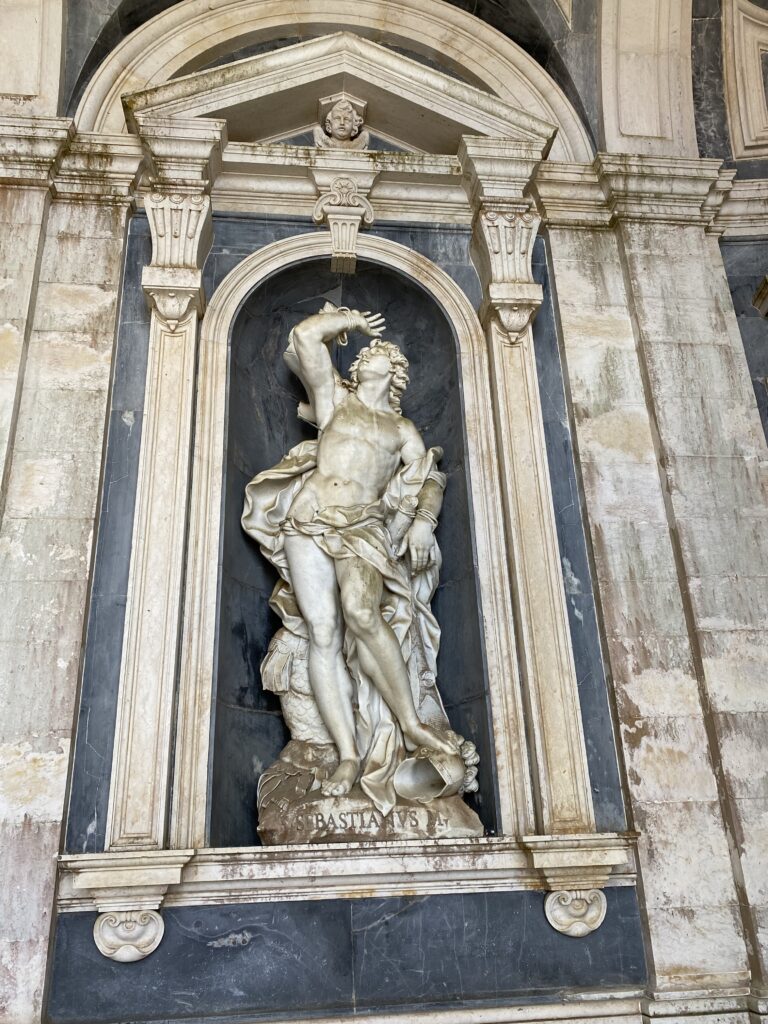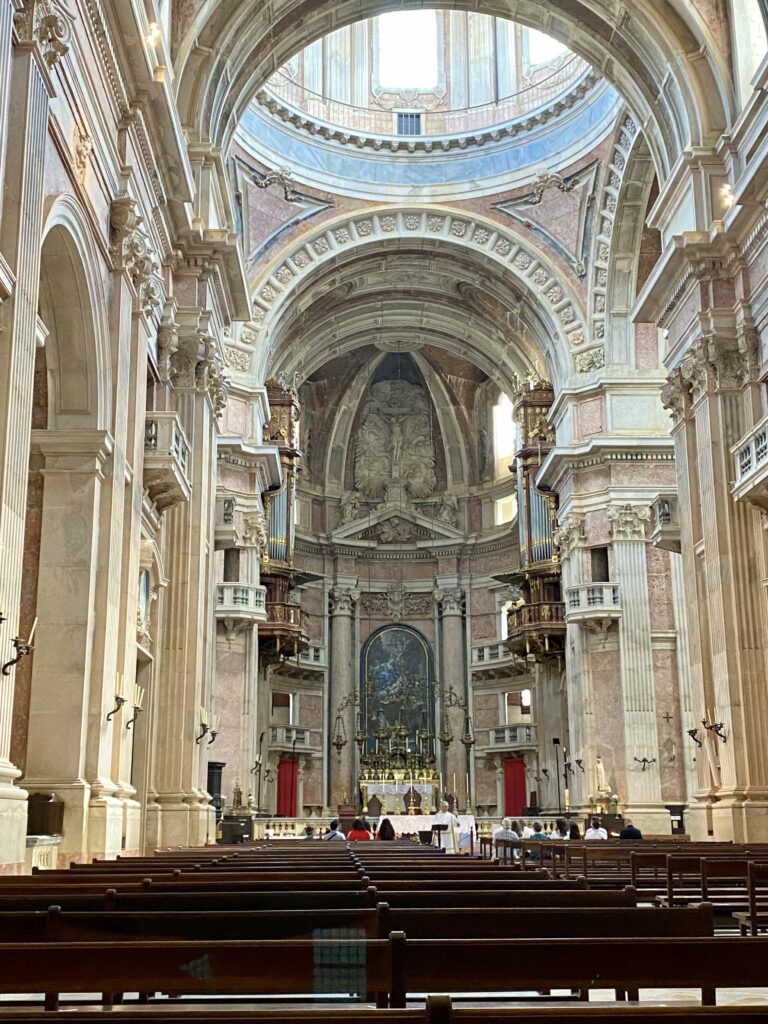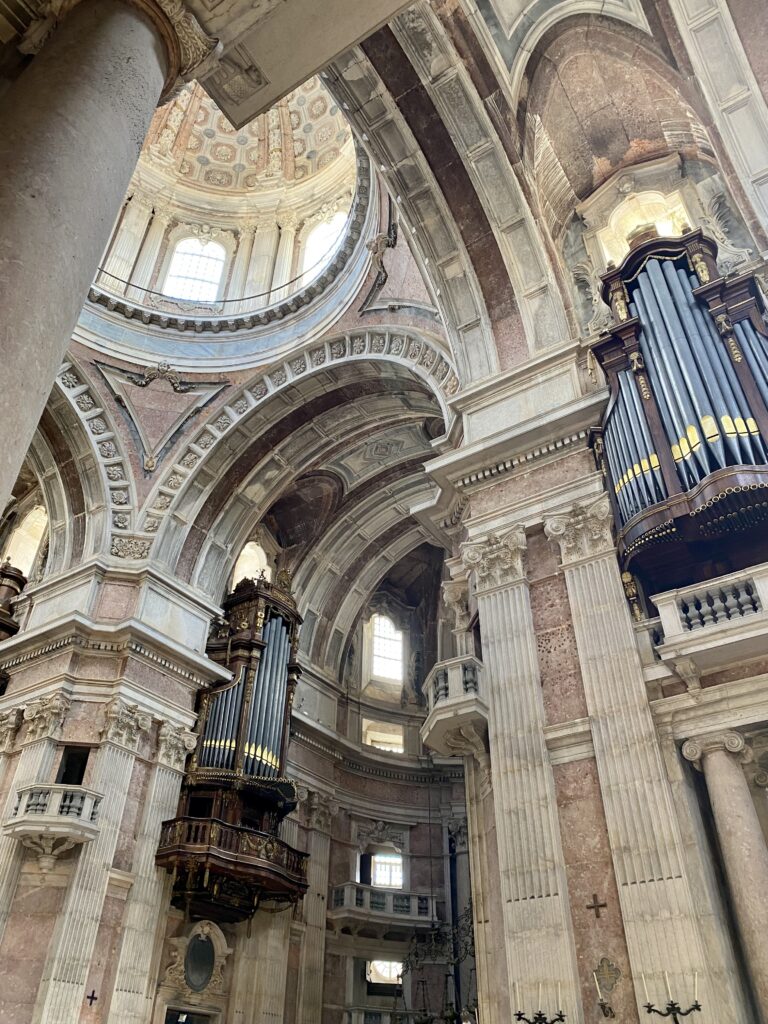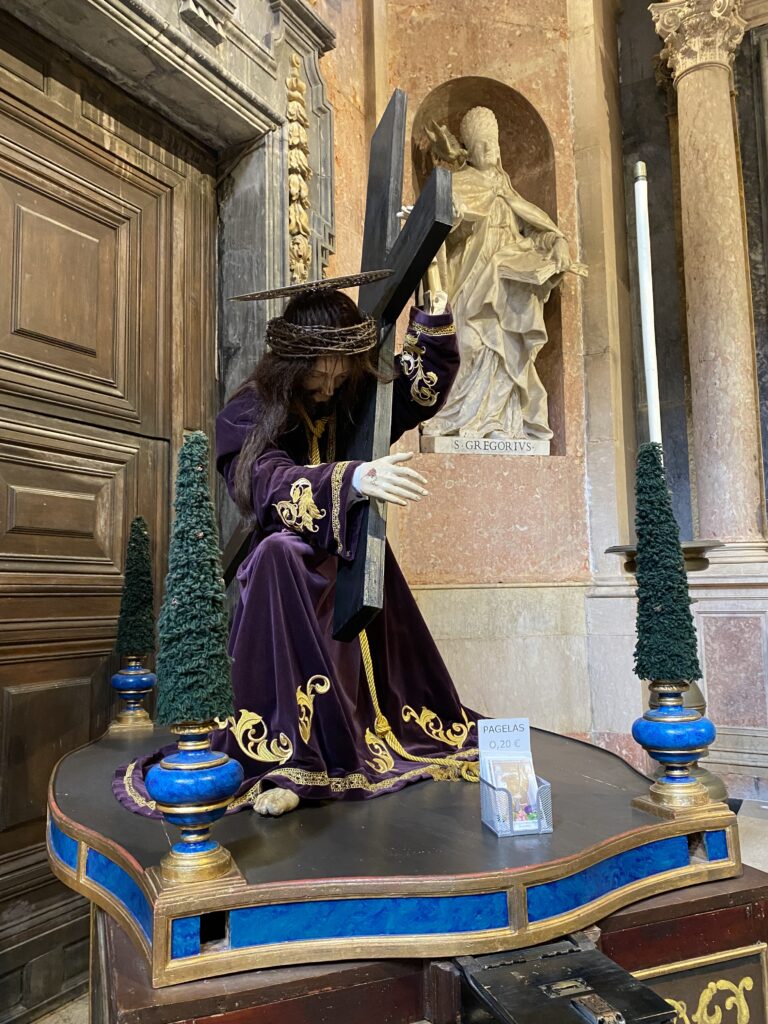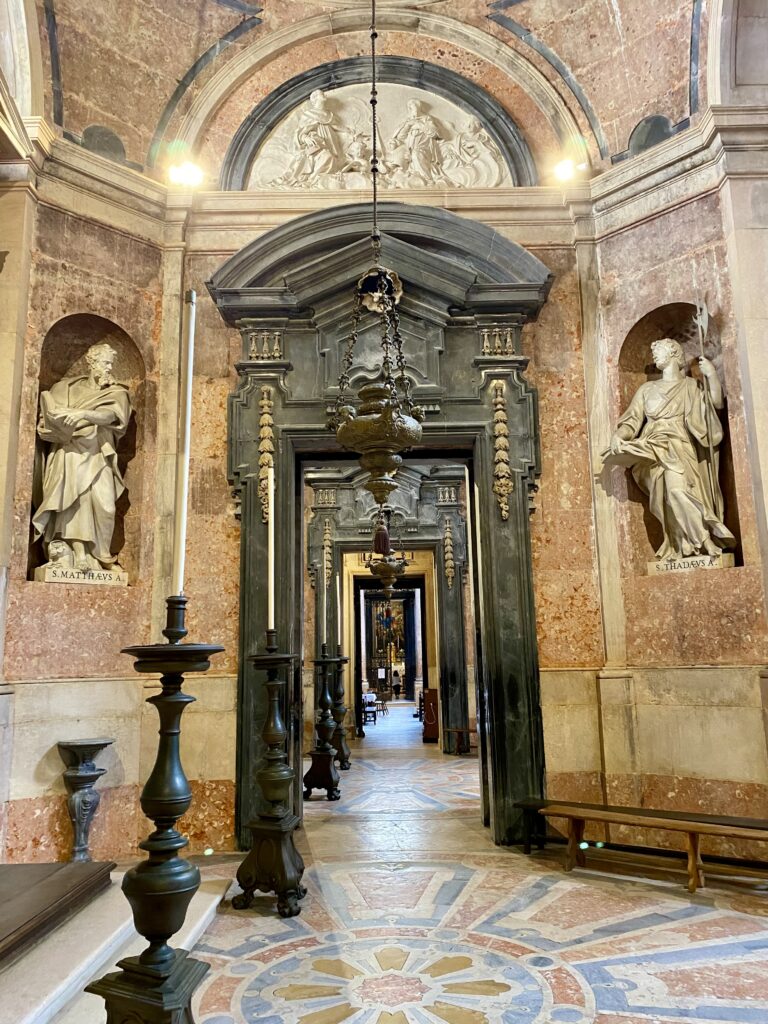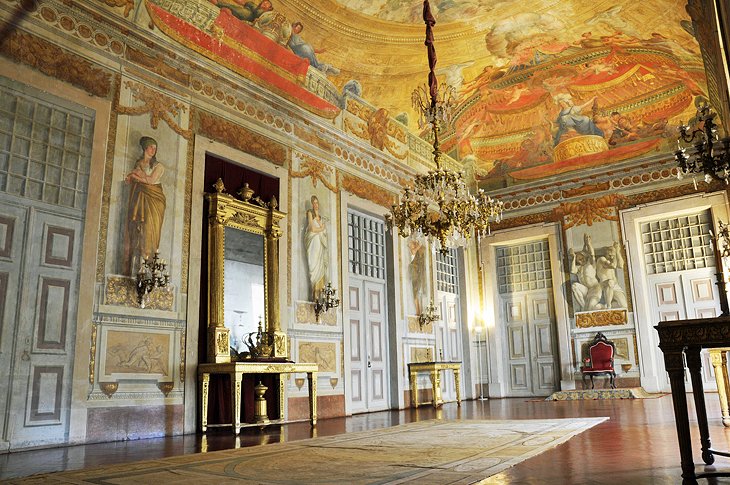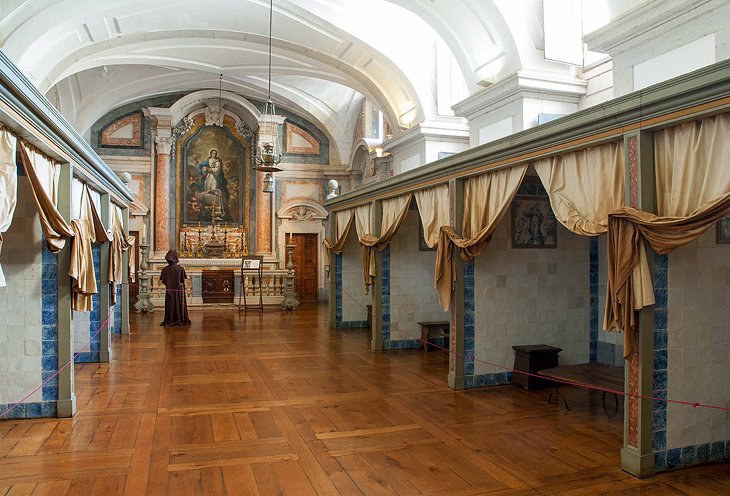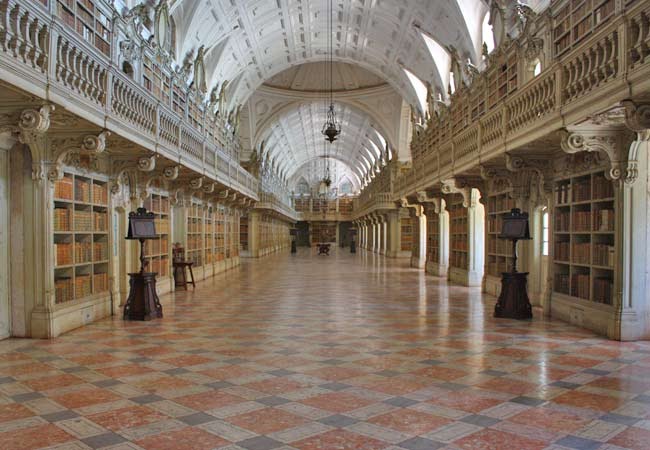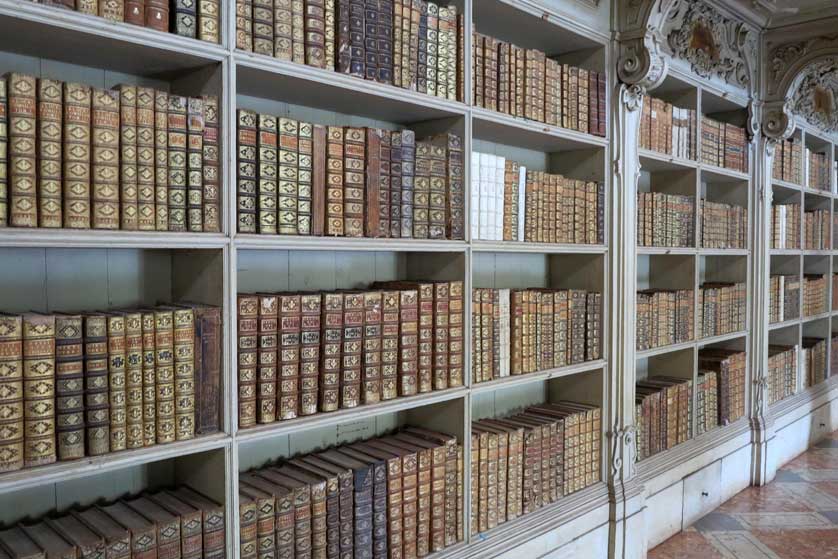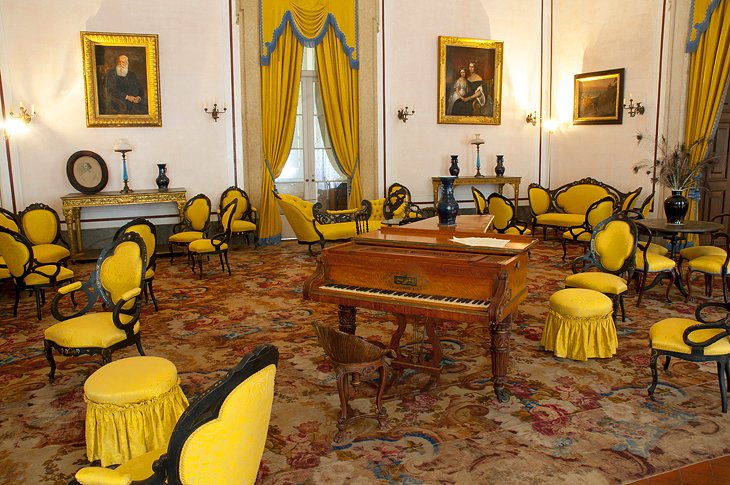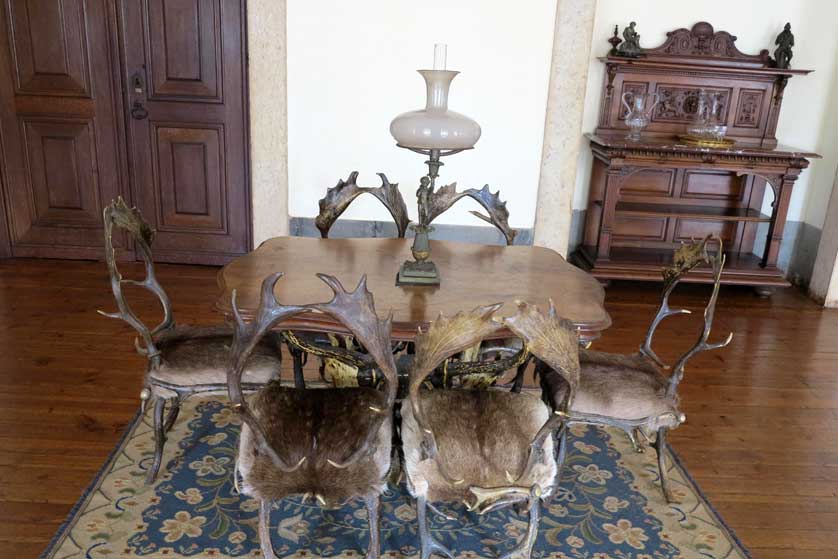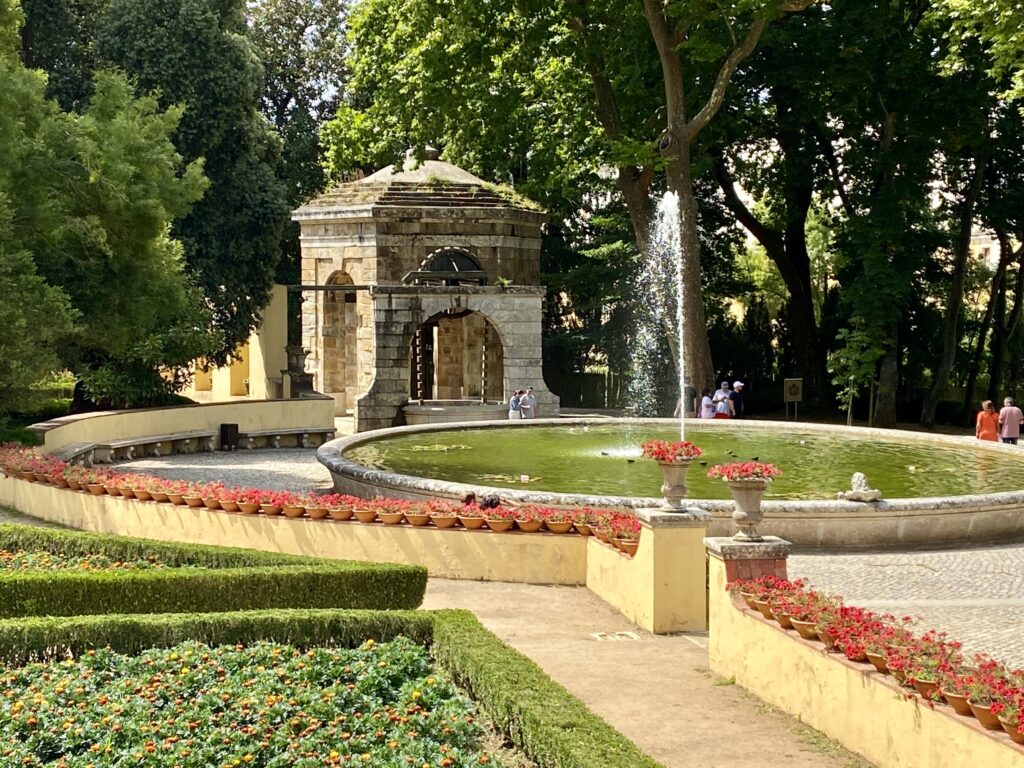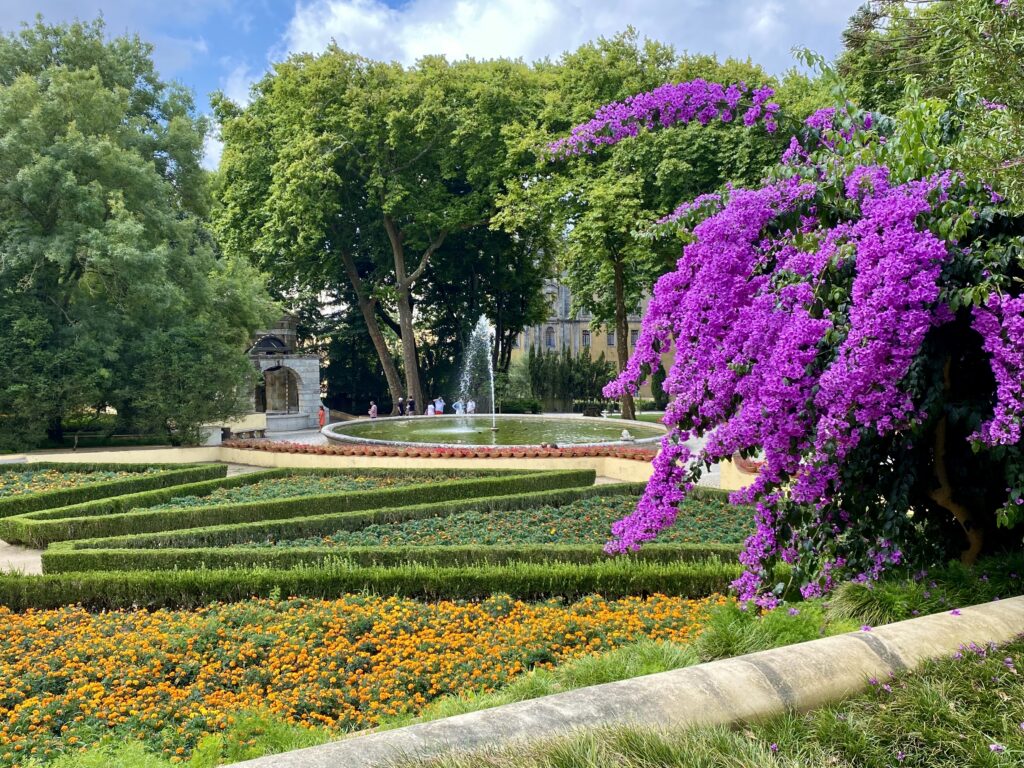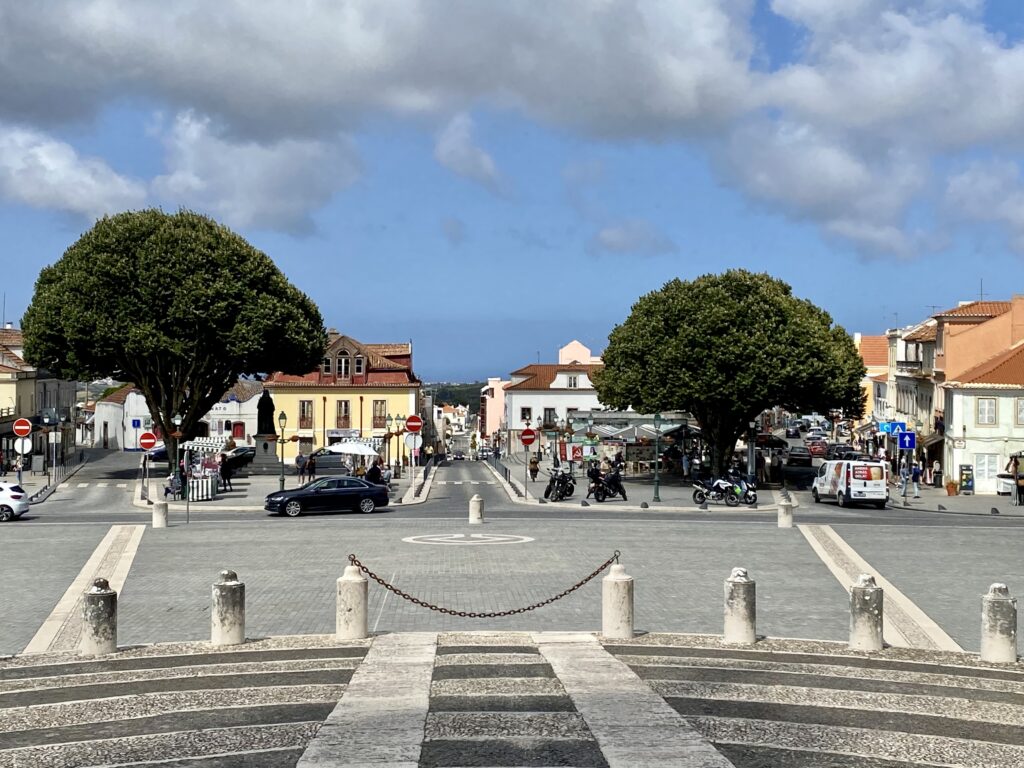We were travelling south through the saloia (the rustic area – so called because it has long provided Lisbon with its garden produce) towards our next stopping point of either Sintra or Cascais when we detoured slightly into Mafra for some supplies and lunch. That was when we noticed a most imposing building which needed further investigation. I quickly read up on the town and learned that the building was formerly the Royal Palace built by order of Joao V way back in the 18th century and which was renamed the National Palace after the Portuguese royal family was overthrown in 1910 and sent into exile. Of particular interest in the palace is, arguably, the finest collection of Italian Baroque sculpture outside of Italy; the large Capuchin Convent and Infirmary and; a spectacular library of more than 36,000 ancient books. Even without those things the building itself was sufficient to interest me and so off I went to explore the Palace…
To the front and centre of the building is the Basilica of our Lady and Saint Anthony of Mafra and it is one very impressive church both inside and outside. It is built in the Italian Baroque style of limestone which was mined mostly in the Sintra area. The first stone was laid in 1717 and the church was consecrated in 1730 although the rest of the Palace was not completed until 1750.
To the front of the Basilica are the statues, sculpted by some of Europe’s finest artists, of various saints who were among the founders and the reformers of the main religious orders – these include Saint Dominic, Saint Benedict, Saint Clare of Assisi and, most appropriate (given that the Palace includes a Capuchin Convent) Saint Francis of Assisi.
The inside of the Basilica is tremendous. I’ll let the photos do the talking…
The Palace was supposed to have been completed well in advance of 1750 but with wealth taken from the Portuguese colony of Brasil, the original plans were continually updated and the Palace grew and grew. For example, the Capuchin Convent (female equivalent of the Franciscan Order) was originally intended to accommodate just 13 nuns but when finished there was room for 300 nuns.
Only a small portion of the Palace’s 1200 rooms are now open to the public. Principal among these are the king’s living quarters, the library, music room, games room and a trophy room and; not forgetting the convent and it’s infirmary.
To the rear of the Palace are the Palace Gardens, the Jardim do Cerco. Entrance into the gardens is free. They are extensive and parts of them are quite pretty (and there is a small aviary) but there is clearly too much work for the handful of staff currently employed. There is perhaps a case for levelling a small charge at least to tourists. Behind the gardens are the former hunting grounds, the Tapada Nacional de Mafra, which is now a deer park and plans are afoot to create a protected area for Iberian Wolves.
And the rest of the town of Mafra? There really isn’t a lot to it…
Soon enough we had completed our journey to Cascais. We even had time for a brief walk around Sintra – too many tourists, we’ll return in the Winter.

